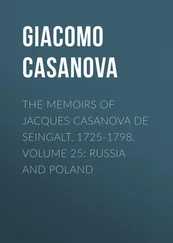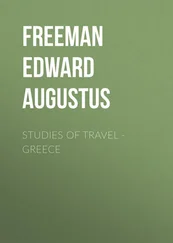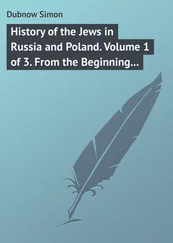John Stephens - Incidents of Travel in Greece, Turkey, Russia, and Poland, Vol. 2 (of 2)
Здесь есть возможность читать онлайн «John Stephens - Incidents of Travel in Greece, Turkey, Russia, and Poland, Vol. 2 (of 2)» весь текст электронной книги совершенно бесплатно (целиком полную версию без сокращений). В некоторых случаях можно слушать аудио, скачать через торрент в формате fb2 и присутствует краткое содержание. Год выпуска: 1838, Жанр: Путешествия и география, на английском языке. Описание произведения, (предисловие) а так же отзывы посетителей доступны на портале библиотеки ЛибКат.
- Название:Incidents of Travel in Greece, Turkey, Russia, and Poland, Vol. 2 (of 2)
- Автор:
- Жанр:
- Год:1838
- ISBN:нет данных
- Рейтинг книги:4 / 5. Голосов: 1
-
Избранное:Добавить в избранное
- Отзывы:
-
Ваша оценка:
- 80
- 1
- 2
- 3
- 4
- 5
Incidents of Travel in Greece, Turkey, Russia, and Poland, Vol. 2 (of 2): краткое содержание, описание и аннотация
Предлагаем к чтению аннотацию, описание, краткое содержание или предисловие (зависит от того, что написал сам автор книги «Incidents of Travel in Greece, Turkey, Russia, and Poland, Vol. 2 (of 2)»). Если вы не нашли необходимую информацию о книге — напишите в комментариях, мы постараемся отыскать её.
Incidents of Travel in Greece, Turkey, Russia, and Poland, Vol. 2 (of 2) — читать онлайн бесплатно полную книгу (весь текст) целиком
Ниже представлен текст книги, разбитый по страницам. Система сохранения места последней прочитанной страницы, позволяет с удобством читать онлайн бесплатно книгу «Incidents of Travel in Greece, Turkey, Russia, and Poland, Vol. 2 (of 2)», без необходимости каждый раз заново искать на чём Вы остановились. Поставьте закладку, и сможете в любой момент перейти на страницу, на которой закончили чтение.
Интервал:
Закладка:
After dinner we took our coffee at the Café Chinois, on the Newski Perspective, equal, if not superior, in style and decoration to anything in Paris. Even the rules of etiquette in France are not orthodox all over the world. In Paris it is not necessary to take off the hat on entering a café or restaurant, and in the south of France a Frenchman will sit down to dinner next a lady with his head covered; but in Russia, even on entering an apartment where there are only gentlemen, it is necessary to uncover the head. I neglected this rule from ignorance and want of attention, and was treated with rudeness by the proprietor, and afterward learned the cause, with the suggestion that it was fortunate that I had not been insulted. This is a small matter, but a man's character in a strange place is often affected by a trifling circumstance; and Americans, at least I know it to be the case with myself, are, perhaps, too much in the habit of neglecting the minor rules of etiquette.
That night my new friend had his effects removed to a room adjoining mine, and the next morning I found him sitting in his window with a book in his hand, watching the young lady opposite. He was so pleased with his occupation that I could not get him away, and went off without him. Mr. Wilkins having offered to accompany me to some of the public institutions, I called for him; and, finding him disengaged, we took a boat on the Neva, and went first to the Academy of Arts, standing conspicuously on the right bank opposite the English Quay, and, perhaps, the chastest and most classical structure in St. Petersburgh. In the court are two noble Egyptian Sphynxes. A magnificent staircase, with a double flight of granite steps, leads to a grand landing-place with broad galleries around it, supporting, by means of Ionic columns, the cupola, which crowns the whole. The Rotunda is a fine apartment of exquisite proportions, decorated with statues and busts; and at the upper end of the Conference-room stands a large table, at the head of which is a full-length portrait of Nicolas under a rich canopy. In one room are a collection of models from the antique, and another of the paintings of native artists, some of which are considered as indicating extraordinary talent.
From hence we went to the Hotel des Mines , where the name of the American minister procured us admission without the usual permit. The Hotel des Mines was instituted by the great Peter for the purpose of training a mining engineer corps, to explore scientifically the vast mineral resources of the empire, and also engineers for the army. Like all the other public edifices, the building is grand and imposing, and the arrangement of the different rooms and galleries is admirable. In one room is a large collection of medals, and in another of coins. Besides specimens of general mineralogy of extraordinary beauty, there are native iron from the Lake Olonetz, silver ore from Tobolsk and gold sand from the Oural Mountains; and in iron-bound cases, beautifully ornamented, there is a rich collection of native gold, found either in the mines belonging to government or in those of individuals, one piece of which was discovered at the depth of three and a half feet in the sand, weighing more than twenty-four pounds. The largest piece of platinum in existence, from the mines of Demidoff, weighing ten pounds, is here also; and, above all, a colossal specimen of amalachite weighing three thousand four hundred and fifty-six pounds, and, at the common average price of this combination of copper and carbonic acid, worth three thousand seven hundred and fifty pounds sterling.
But the most curious part of this valuable repository is under ground, being a model of a mine in Siberia. Furnished with lighted tapers, we followed our guides through winding passages cut into the bowels of the earth, the sides of which represented, by the aggregation of real specimens, the various stratifications, with all the different ores, and minerals, and different species of earth, as they were found in the natural state; the coal formation, veins of copper, and in one place of gold, being particularly well represented, forming an admirable practical school for the study of geology, though under a chillness of atmosphere which would be likely very soon to put an end to studies of all kinds.
From here we passed to the imperial Academy of Sciences, by far the most interesting part of our day's visiting. This, too, was founded by the Great Peter. I hardly know why, but I had already acquired a warm admiration for the stout old Czar. There was nothing high or chivalric about him, but every step in Russia, from the Black Sea to the Baltic, showed me what he had done to advance the condition of his people. I knew all this as matter of history, but here I felt it as fact. We strolled through the mineralogical and zoological repositories, and stopped before the skeleton of that stupendous inhabitant of a former world, denominated the mammoth, whose fame had been carried over the waste of waters even to our distant country, and beside which even the skeletons of elephants looked insignificant. What was he? where did he live, and is his race extinct? It gave rise to a long train of interesting speculation, to endow him with life, and see him striding with gigantic steps, the living tenant of a former world; and more interesting still to question, as others had done, whether he was not, after all, one of a race of animals not yet extinct, and perhaps wandering even now within a short distance of the Polar Sea.
There is also in this part of the museum a collection of anatomical specimens and of human monsters; an unpleasing exhibition, though, no doubt, useful to medical science; among them was a child with two heads from America. More interesting to me was a large collection of insects, of medals, and particularly of the different objects in gold found in the tumuli of Siberia, consisting of bracelets, vases, crowns, bucklers, rings, sabres with golden hilts, Tartar idols, &c., many of them of great value and of very elegant workmanship, which have given rise to much interesting speculation in regard to the character of the people who formerly inhabited that country. The Asiatic museum contains a library of Chinese, Japanese, Mongolese, and Tibetan books and manuscripts; Mohammedan, Chinese, and Japanese coins; an interesting assemblage of Mongolese idols cut in bronze and gilded, and illustrating the religion of Buddha. There is also an Egyptian museum, containing about a thousand articles. The cabinet of curiosities contains figures of all the different people conquered under the government of Russia, habited in their national costumes; also of Chinese, Persians, Aleutans, Carelians, and the inhabitants of many of the Eastern, Pacific, or Northern Islands discovered or visited by Russian travellers and navigators, as well as of the different nations inhabiting Siberia.
But by far the most interesting part of the museum is the cabinet of Peter himself, consisting of a suite of apartments, in which the old Czar was in the habit of passing his leisure hours engaged in some mechanical employment. In one room are several brass cylinders turned by his own hands, and covered with battle-scenes of his own engraving. Also an iron bar forged by him; bas-reliefs executed in copper, representing his desperate battles in Livonia; an ivory chandelier of curious and highly-wrought workmanship, and a group in ivory representing Abraham offering up his son Isaac, the ram and the angel Gabriel cut out entire. In another room is his workshop, containing a variety of vessels and models etched in copper, and a copperplate with an unfinished battle-scene. His tools and implements are strewed about the room precisely in the state in which he left them the last time he was there. In another chamber were the distended skin of his French body-servant, seven feet high; the Arabian horse which he rode at the bloody battle of Pultowa, and the two favourite dogs which always accompanied him; and in another the figure of the old Czar himself in wax, as large as life; the features, beyond doubt, bearing the exact resemblance to the original, being taken from a cast applied to his face when dead, and shaded in imitation of his real complexion. The eyebrows and hair are black, the eyes dark, the complexion swarthy, and aspect stern. This figure is surrounded by the portraits of his predecessors, in their barbarian costumes, himself seated in an armchair in the same splendid dress which he wore when with his own hands he placed the imperial crown on the head of his beloved Catharine. Here, also, are his uniform of the guards, gorget, scarf, and sword, and hat shot through at the battle of Pultowa; and the last thing which the guide put into my hands was a long stick measuring his exact height, and showing him literally a great man, being six Russian feet. I must not forget a pair of shoes made by his own hands; but the old Czar was no shoemaker. Nevertheless, these memorials were all deeply interesting; and though I had seen the fruits of his labours from the Black Sea to the Baltic, I never felt such a strong personal attraction to him as I did here.
Читать дальшеИнтервал:
Закладка:
Похожие книги на «Incidents of Travel in Greece, Turkey, Russia, and Poland, Vol. 2 (of 2)»
Представляем Вашему вниманию похожие книги на «Incidents of Travel in Greece, Turkey, Russia, and Poland, Vol. 2 (of 2)» списком для выбора. Мы отобрали схожую по названию и смыслу литературу в надежде предоставить читателям больше вариантов отыскать новые, интересные, ещё непрочитанные произведения.
Обсуждение, отзывы о книге «Incidents of Travel in Greece, Turkey, Russia, and Poland, Vol. 2 (of 2)» и просто собственные мнения читателей. Оставьте ваши комментарии, напишите, что Вы думаете о произведении, его смысле или главных героях. Укажите что конкретно понравилось, а что нет, и почему Вы так считаете.







![William Frith - John Leech, His Life and Work. Vol. 1 [of 2]](/books/747171/william-frith-john-leech-his-life-and-work-vol-thumb.webp)

![William Frith - John Leech, His Life and Work, Vol. 2 [of 2]](/books/748201/william-frith-john-leech-his-life-and-work-vol-thumb.webp)


